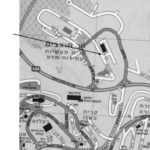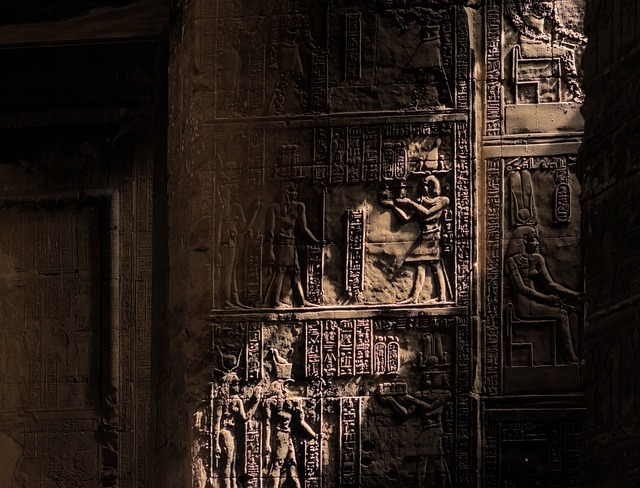Diaries of a tour guide course
Undertaking a serious study of the Jewish promised land is no simple matter. It is one thing to just look at a map and decide where to go and visit famous sites. But, what about the history connected with those sites. There alone one can sub-divide knowledge of the past into several sectors. On the one hand it is possible to gain an understanding of the evolvement of the children of Israel through biblical studies, which is highly recommended. However, that alone doesn’t always satisfy a desire to bring such accounts to life. Extra biblical sources can provide sterling evidence of the neighbors that surrounded the early Hebrews. Records are kept in a wide array of formats from cuneiform tablets baked in hard clay, to the renowned Dead Sea Scrolls on parchment. Our quest to learn more in-depth information about the Jewish heritage begins by becoming aquatinted with an institution that is dedicated to both uncovering this past through physical means such as archaeological excavations, as well as preserving hard found discoveries often prior to them being house in a museum for public access.
Israel Antiquities Authority – Overview
The Israel Antiquities Authority may be better known to students of biblical archeology than to the general public, but without their meaningful work, we would all be worse off for being deprived of the vast collection and knowledge base accumulated over past decades. Accordingly, join us in a field trip that visited their establishment. These records are kept totally unedited to allow you to capture the unwinding story as it occurred.
 The 18 November field trip consisted of visits to the Israel Lands Authority in the morning and the Bible Lands Museum Jerusalem in the afternoon.
The 18 November field trip consisted of visits to the Israel Lands Authority in the morning and the Bible Lands Museum Jerusalem in the afternoon.
The Israel Antiquities Authority
The host of the visit to the Authority’s Har Hotzvim facility on the morning of 18 November 2003 was Dr. Tikva Levine.
Archaeology is the study of ancient finds created by man, which are found in situ.
A tel, which looks like a mound, is an ancient archaeological site which is man-made. It is a place of living and leaving, but also of returning – a place which is abandoned at one time, but is returned to by others who build on top of the original site. An accumulation of layers, it is uncovered but never fully excavated, as parts of the site are left for future archeologists. A tel is usually found at a location with four main features: 1) natural elevation to begin with; 2) water nearby; 3) natural protection; 4) the junction of roads.
The Israel Antiquities Authority (IAA), under the Ministry of Education, is responsible for all archaeological matters (including underwater) in Israel. The IAA is in charge of their identification, protection, conservation, research, exposure and publication. It administers the state’s national collection of antiquities and aims to increase public awareness of the remnants of the past. Their poorly-maintained web site is sometimes available at: www.israntique.org.il
The IAA has wide range of activities including:
• Inspection and protection of antiquity sites in accord with the Law of Antiquities.
• Excavation and research of antiquities sites.
• Conservation, restoration and development of antiquity sites.
• Inspection of archaeological excavations in Israel.
• Administration and safekeeping of the National Collection of Antiquities.
• Conducting, promoting and publishing archaeological researches.
• Gathering and documenting of national archaeological information.
• Conducting and promoting educational and informational activities aimed to protect the national heritage.
• Maintaining international scientific communication on archaeological issues.
Organizational structure
The IAA consists of both regional and centralized departments. There are three different branches, covering the North, Centre and South of the country. There is a separate wing which covers the West Bank and Gaza. The Regional Offices are responsible for enforcement of the Law of Antiquities and declare new antiquity sites; conduct rescue excavations and supervising all excavations. The laboratories are located at Har Hotzvim, Jerusalem, and are not open to the public, while the library and archives are at the Rockefeller Museum, Sultan Sulayman Street, Jerusalem.
• The Antiquities Robbery Prevention Unit is charged with robbery prevention, inspection and supervision of commerce in antiquities.
• The Maritime Archaeology Unit is in charge of the underwater archaeological resources.
• The Conservation Department is responsible for conservation of archaeological sites during excavation and as part of the development of sites for public presentation. This includes on-site conservation, such as mosaic floors, and of objects taken from the sites, which need conservation and cleaning, as well as ideal conditions in which to be displayed (such as the Dead Sea Scrolls.) The department undertakes conservation surveys and documentation, planning and implementation of conservation works, inspecting and supervising them. It is also involved with development of advanced conservation methods, professional training and advocacy.
• The Excavations and Surveys Department is the professional core of the IAA. It is the authority for archaeological matters, advancing professional expertise, issuing of excavation license and initiation of scientific contacts with archaeological institutions in Israel and abroad. The country is divided into a grid, and the surface of every 10 km X 10 km square is surveyed archaeologically. The finds are assembled, documented and published, with sketches and photos, and this enables planning of both where to dig and where not to dig. Once an archeological site is identified, it is against the law to violate it. Even if there is no archeological site, when an ordinary site is excavated an inspector follows behind the bulldozer to see what comes out. If an archeological site is uncovered while building, work is stopped for excavation. The question then arises as to whether to document the site and cover it up, or whether to leave it exposed.
• Artifacts Treatment Department is responsible for the treatment and conservation of movable artifacts through its laboratories.
• National Collections Department manages the registration and documentation of all antiquities in the country, as well as consultation to museums, initiating exhibits and lending artifacts.
• Publications Department publishes the results of the IAA excavations, surveys and research. These include “Archeological News” which contains interim reports about sites which have been dug up which are needed to obtain a license for the following season. Atikot contains final reports about small sites, as well as reports on coins, pottery, etc. While the preliminary report is in Hebrew, there are also publications and abstracts in Atikot” in English. (Each day of a dig is documented with maps and pictures.) The desired result of an excavation is an annual publication, which is required in order to continue.
• Archives and Library include a scientific library with an extensive collection, interconnected with other professional libraries. There is also microfilm back-up of finds.
• Educational centers carry out activities in schools and for the general public, to promote awareness for preservation of the heritage.
Further episodes of this diary will be featured in later issues of the Jewish TV Channel through its Jewish Travel Channel.
Do you fancy taking a trip to Israel and maybe becoming a tour leader of your own group? The benefits are enormous and can include many free travel opportunities. A special course will be operated by qualified and experienced JTVC staff to enable you to learn more about such subjects as the history of Israel, its diverse people, its geological composition, and much more besides. Feel free to get in touch with us for further details.
CONTACT JTVC



